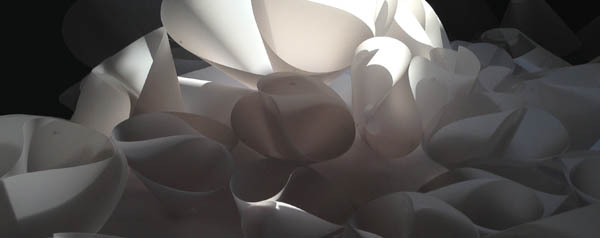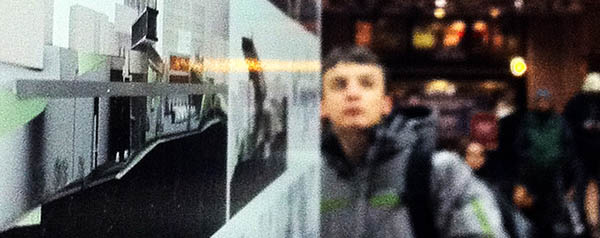

Hydra, an experimental kinetic installation using open source technology to respond to light @ Fenway’s Landmark Center.


WHY STOP EXHIBITION Jan 19-30. South Station. Boston, MA.
Revolutionizing Urban Design Research with AI: How AI Tools Are Empowering Architects and Designers
Urban design is the field where practical living meets artistic expression to construct places that strike a balance between appearance and use. If urban designers and architects could quickly and more effectively access innovative research, a world of insights would open out to improve their work.
Now enter AI-driven design software, along with other cutting-edge tools like virtual collaboration platforms, AI research paper generators, and advanced simulation tools. These instruments, like the AI paper generator, are changing the interaction between design professionals and academic knowledge, offering new, creative ideas to incorporate into their projects. With AI research paper writer, researchers can efficiently generate high-quality academic content, streamlining the writing process and enhancing productivity.
AI tools, in particular, are transforming the way designers quickly access the latest studies, while other technologies, such as generative design platforms and parametric modeling software, help bring those insights to life in ways that were once unimaginable.
AI as a Catalyst for Innovation
Urban growth is happening faster than ever and calls for creative ideas combining sustainability, livability, and modern technology. Staying ahead of the curve and constantly looking for fresh research, trends, and technologies that guide their work are the obligations of architects and urban designers.
Urban development is happening at a shockingly fast speed. The United Nations projects that by 2025 about 60% of people on Earth would live in cities. Demand for sustainable infrastructure is rising; green construction markets are expected to increase by 13% yearly throughout the next ten years. These numbers emphasize the need for architects and urban designers to use the most recent knowledge and ideas in their domain.
Instead of spending countless hours sifting through academic databases, AI tools streamline this process. They analyze vast amounts of scholarly content, pulling relevant insights tailored to the user’s specific project. This allows urban designers to quickly absorb the latest research on urban ecology, smart cities, sustainable architecture, or public space design—knowledge that could shape the future of their designs.
Connecting Disciplines for Creative Urban Design: The Role of AI Tools in Accessing Knowledge Across Sectors
Combining components of engineering, sociology, environmental science, and public policy, urban design is an interdisciplinary field. Designers must have a wide range of knowledge if they want to produce very creative and sustainable places. By providing insights from many academic fields, AI technologies are transforming this process and helping architects and urban designers to address difficult problems with informed, innovative answers.
Here are some striking illustrations of how artificial intelligence can support designers in including multidisciplinary knowledge:
- Energy-Efficient Building Materials: Using AI, an architect working on a residential complex can find the most recent developments in sustainable building materials as energy-efficient windows or biodegradable insulation.
- Social Dynamics in Mixed-Use Developments: AI techniques can assist designers construct environments that support interaction and inclusiveness by pulling studies on how metropolitan regions with a mix of residential, commercial, and recreational areas affect social behavior and community involvement.
- Psychological Effects of Urban Greenery: Designers can investigate how adding green areas—such as parks or rooftop gardens—affects the mental health and well-being of city dwellers using AI to identify studies on biophilic design concepts and their impact on users.
- Traffic Flow Optimization Models: AI research tools may give urban designers the most recent statistics on traffic management systems, including improvements in smart traffic lights, pedestrian zones, and the integration of autonomous vehicles to lessen congestion.
AI guarantees that urban designers have the information required to develop environments that are not only functional but also socially and environmentally conscious by aggregating ideas from several domains.
Urban Design: Creativity and Innovation
Urban design is about redefining people’s way of life, work, and interaction with their surroundings, not only about building practical places. Although AI research paper generators are great for fast access to scholarly papers, their possibilities stretch much beyond only research. For architects and urban designers, these technologies are revolutionizing their creative process and helping them to approach design problems from new angles and with original ideas.
Here’s how urban design is being inspired by AI tools and generating innovation:
Cross-Pollination of Ideas
AI research tools pull information from diverse fields, offering urban designers access to a wealth of case studies, design philosophies, and groundbreaking concepts. For instance, a designer working on a public park might discover innovative ideas from the world of landscape ecology or find case studies of urban farms that inspire sustainable design solutions.
Inspiration from Global Innovations
AI doesn’t limit itself to local knowledge—it draws from global research, offering architects and designers a chance to learn from the best practices around the world.
Imagine a designer working in a city with limited green space, using AI to uncover how cities like Singapore or Copenhagen have successfully integrated vertical gardens, green rooftops, or green infrastructure into urban spaces.
Breaking Design Norms
Traditional urban design tends to focus on functional solutions that meet the basic needs of a population, but AI tools encourage designers to think bigger.
Exposure to new academic studies and research trends challenges urban designers to explore unconventional ideas, from how urban spaces can adapt to climate change, to how smart technology can seamlessly integrate into everyday life.
AI-Driven Generative Design
Beyond just accessing academic content, AI tools can assist in the design process itself.
For example, generative design algorithms can create new building shapes, layouts, and urban planning strategies by analyzing vast amounts of data. This not only saves time but also opens up unexpected, innovative approaches that a human designer might not have considered.
Moreover, AI tools can suggest connections between research topics that urban designers may not have previously considered. For instance, the intersection of AI in urban design and green technologies could reveal new possibilities for energy-efficient smart cities. By presenting these novel intersections, AI helps professionals break free from conventional design paradigms and explore uncharted creative territories.
A New Era of Collaborative Design
Collaboration is key in urban design, and AI tools foster a more connected approach to research. Designers and architects no longer have to work in isolation when gathering the necessary academic references. AI tools can facilitate collaboration by sharing research materials instantly, allowing teams to work with the latest knowledge across time zones and locations.
Furthermore, AI’s capacity to condense difficult research into digestible forms facilitates the communication of discoveries among many departments—including those of architects, city planners, or environmental experts. This common body of knowledge speeds up the design process and raises the caliber of the produced results.
Managing Challenges with AI Assistance
AI tools have their challenges even if they are giving creators great knowledge capacity. AI-generated research may sometimes need human intervention to ensure that the information aligns with specific project needs.
Furthermore, AI cannot replace the nuanced decision-making that urban designers rely on when considering community engagement or cultural relevance in their designs. However, when used effectively, AI can complement human creativity and expertise, providing a foundation of knowledge to support the final design choices.
Overall, for architects and urban designers, artificial intelligence tools are bringing forth a new age. These technologies help design professionals keep ahead of trends and push the limits of urban innovation by streamlining the research process, encouraging creativity, and allowing cooperation. Architects and urban designers working with artificial intelligence are not only building cities; they are also guiding the future.